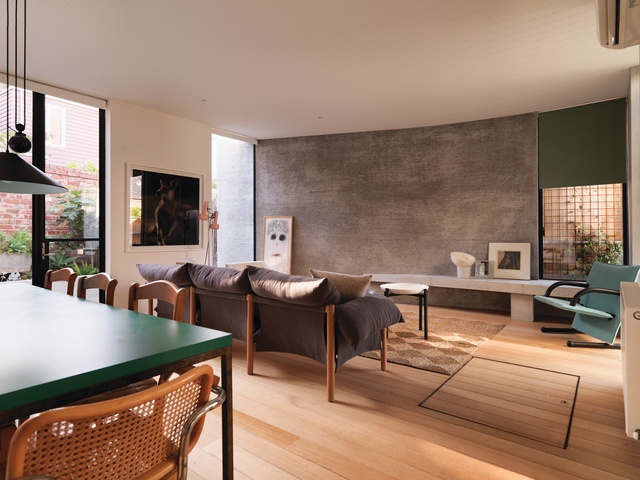As many of the movements around this time, Protomodernisn began from a discontentment with the Victorian era. The main countries that this movement took place in were Germany and Austria. It was similar to Art Nouveau in the way that it was inspired by nature and had no historical precedent, but differed because Protomodernism was more linear. Materials such as plywood, aluminum, metals, beachwood, leather, and velum were used to make pieces like chairs, upholstered furniture, and tables.
Ornamentation was almost completely rejected in this era, unless it supported the function of the design. It also was similar to the arts and crafts movement because of this, but Protomodernism embraced the use of the machine, as long has high quality design was produced. The Vienna Secession took place during this era. Artists and designers that were apart of this boldly had no tie to history, and believed that all arts were worthy of design. This included house hold objects. Many designers during this time withdrew from academia, and were inspired by the subconscious and other non-art related themes. Designers during this time also created paintings, murals, and dabbled in different kinds of writing, usually about their design theories or architectural knowledge.
 |
| Postal Savings Bank - Otto Wagner |
 |
Café Museum - Adolf Loos
Current Applications:
 |
Londen Terrace Gardens
url
|
 |
An interior with Protomodernism inspired furniture pieces.
url
One step further...
Otto Wagner was an Austrian architect, urban planner, designer, teacher and writer. He believed in "staunch functionalism", meaning that he was a loyal believer of functionalism within a building, which seemed to be a common trend in the Vienna Secession and the broader Protomodernism movement. His furniture was designed around the architecture that it was within. His material choice was very economical as it was determined on what was available and workable for each project. One of his most important designs was the Postal Savings Bank. While large in scale, the odd shaped plan had a purpose for neatly organizing offices and the people that would use them. Structural pieces such as bolts acted as ornamentation, which was another value of the Vienna Secession.
](https://cdn.kastatic.org/ka-perseus-images/d05507189277a609b3d767d8821edd82eed1a058.png) |
| Postal Savings Bank - Plan |
Source:
https://www.khanacademy.org/humanities/art-1010/architecture-20c/a/wagner-postal-savings-bank
|
|


](https://cdn.kastatic.org/ka-perseus-images/d05507189277a609b3d767d8821edd82eed1a058.png)
I found your information about Otto Wagner very interesting! I thought it was really cool how ,like you said, his building the Postal Savings Bank plan was oddly shaped in a way that it prioritized how the office spaces would be placed.
ReplyDeleteOlivia, I knew ornamentation was rejected in the Promodernism movements but I found it interesting how you said they could use it in some cases if it supported the function of the design; I didn't know that.
ReplyDeleteOlivia, I appreciate your summary of the Protomodernism design period. I liked how you specified the materials used during this period. For some reason two of your images are not showing up- you may want to check those. Very nice current application images.
ReplyDeleteOtto Wagner was a very good choice for one step further. Good description of the Postal Savings Bank with the floor plan and source.